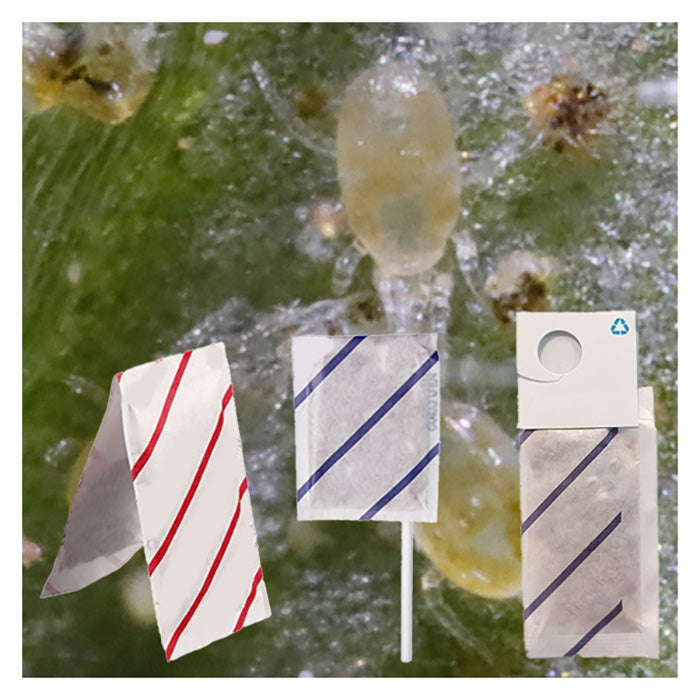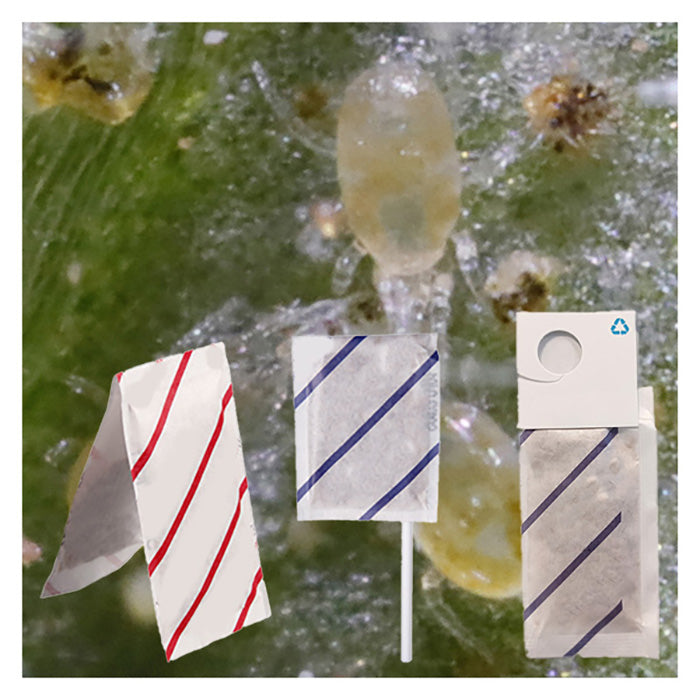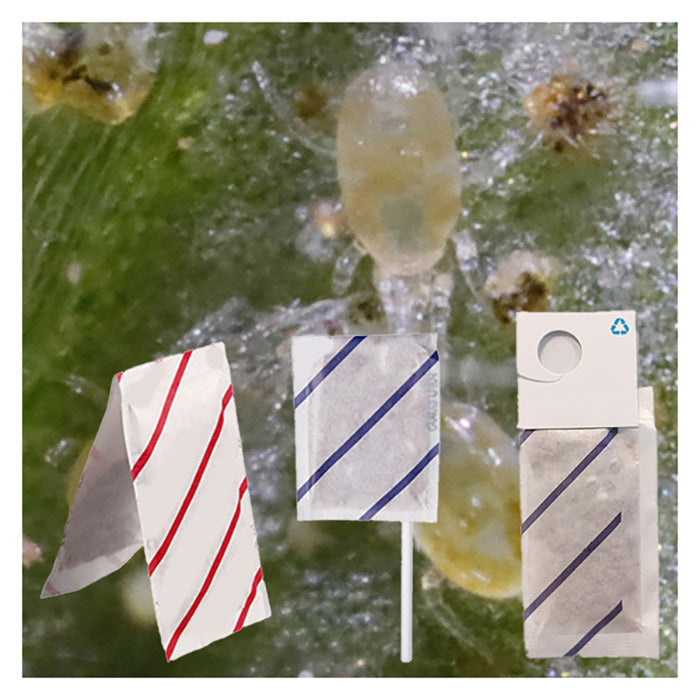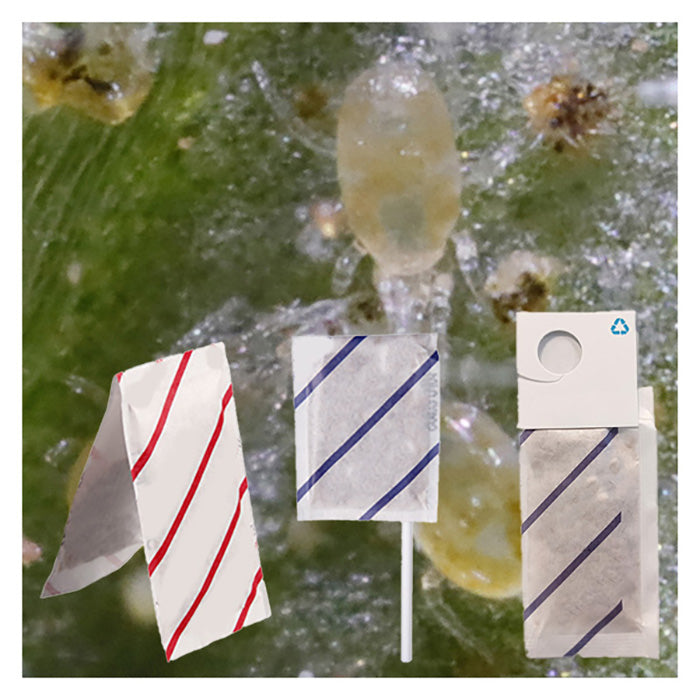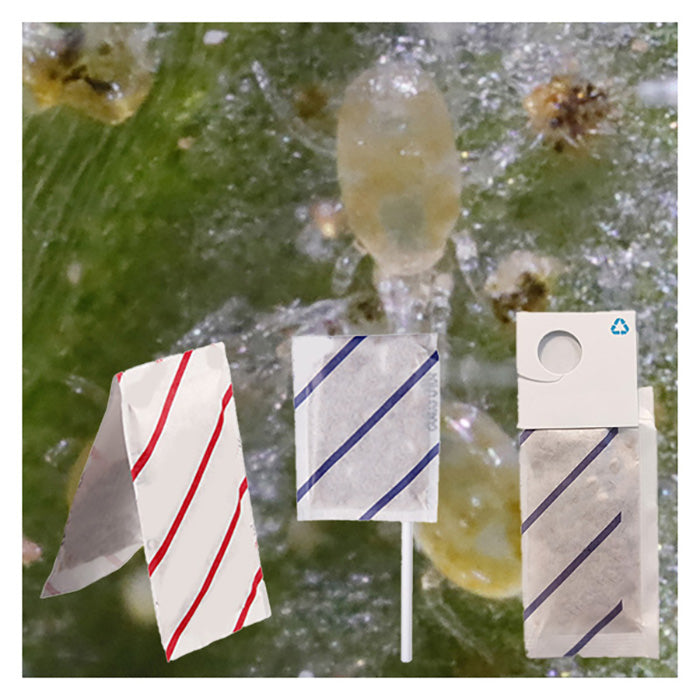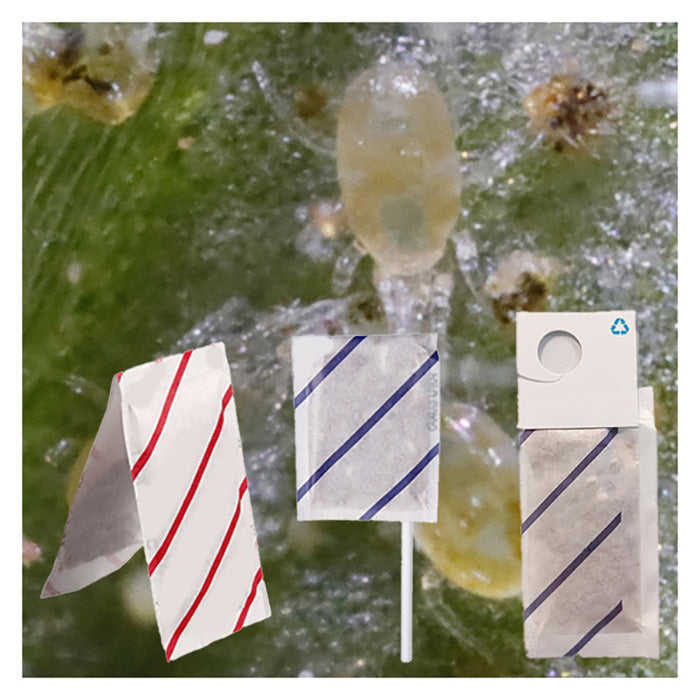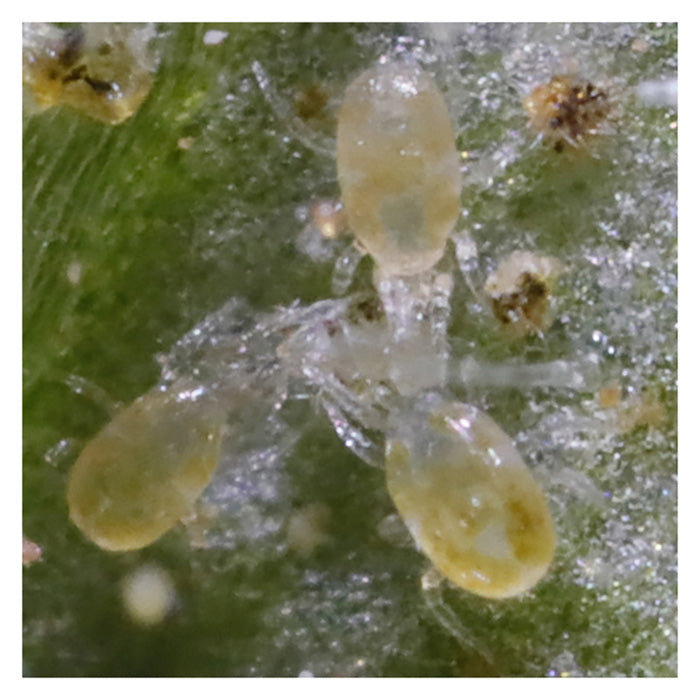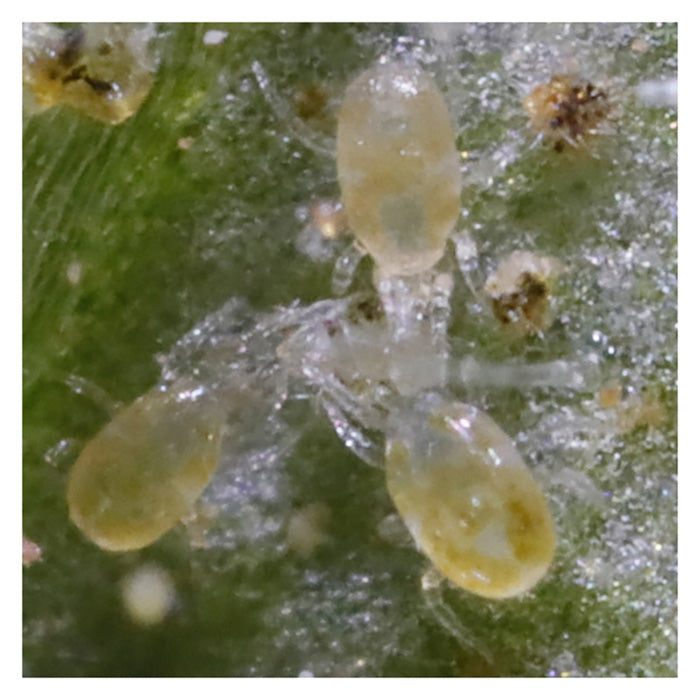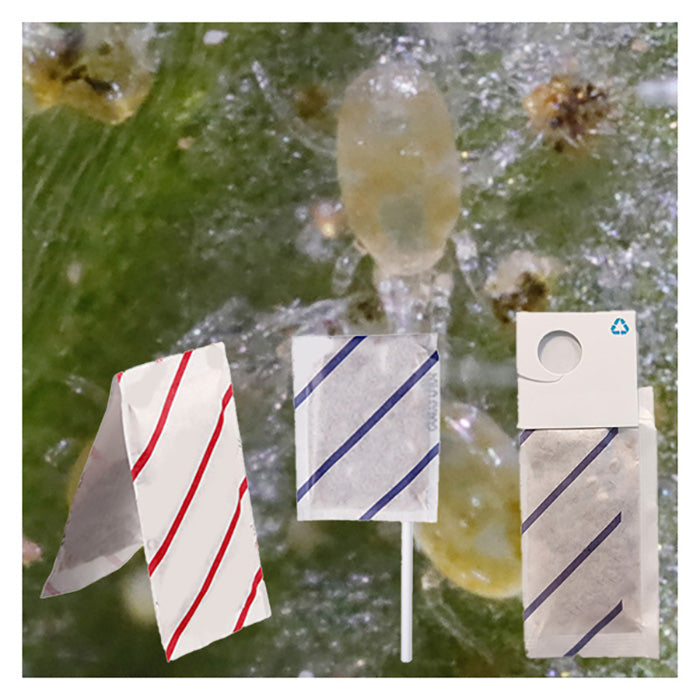This mite predator survives low spider mite densities by feeding on pollen and other small arthropods. Survives a wide range of temperatures and can tolerate lower humidity (40%RH).
Ships FREE via Overnight methods on Tuesdays Only. Minimum 7-day processing prior to shipment.
Neoseiulus (= Amblyseius) californicus is an oblong, tiny predatory mite that feeds on a variety of prey and is useful in prevention, control and management of infestations of various spider mite species. It can also be used as a preventative control of broad mites, cyclamen mites, and some russet mite species. Since they are slower feeders than other mite predators (P. persimilis, N. fallacis), N. californicus should be used in conjunction with other suitable beneficial insects in the presence of large pest populations.
N. californicus mite predators are pear-shaped relative to pest mites and have a creamy color (more opaque than pest mites). Their slow feeding habits make them effective against low mite populations and when used preventatively. N. californicus are known to be effective on the west coast and in the southeastern United States due to suitable temperature and humidity levels in those regions. Use on crops including cucumbers, tomatoes, strawberries, tropical foliage plants, and greenhouse roses. Suitable environments for release are gardens, grow rooms, fields, orchards and greenhouses.
Preferred Food: Two-spotted spider mites and many other mite species. Reproduction rates are best when spider mites are the primary food source. These predatory mites consume egg, nymph and adult stages of pest mites.
Optimum Conditions: 50-105°F, 40-60% RH
Significantly cooler and warmer temperatures will slow and/or inhibit reproduction and development. Higher humidity is generally necessary with higher temperatures; however, N. californicus can persist in low humidity environments with limited food sources. The slower pace that these predatory mites feed at (5 mites per day) and their ability to sustain themselves on pollen allows them to survive longer in low pest populations. A full life cycle for N. californicus lasts between one to two weeks and is significantly influenced by temperature.
General Release Rates:
Some crops, including tomatoes & other highly resinous crops, require higher release rates.
- 1-4 mites per plant (roughly 1,000-4,000 per 1,000 square feet) or 1-2 per square foot in greenhouses, biweekly, 2-3 times
- 5,000-20,000 per acre depending on infestation levels, biweekly, 2-3 times
Sachet Release Rates:
Sachets: Sachets include multiple life cycles (adults, juveniles and possibly eggs) for early intervention control (≈4-6 weeks), best used preventatively, or with a low pest pressure. Introduce N californicus sachets into growing area at first sign of mite infestation. For hot spot treatment, apply bulk adult N californicus.
Sachet Styles: Select the style of sachet best suited for your needs.
- Sachets w/hook: Individual sachets with hook to hang in plant canopy.
- Sachets on sticks: Best for potting trays, clones or low plants.
- Gemini Sachets: Individual sachets in tent shape (no hook, no stick) to be placed directly on soil, or hung on netting.
- Bugline: Ingenious design for maximum efficiency. 6 strips or "lanes" of 328 feet of sachets to be pulled across tables, netting or beds. Sachets alternate between 1 active "mite" sachets and 6 empty "spacer" sachets.
Release Rates: Vary on pest and infestation level. Consider bulk applications for hot spot treatment.
- 1-2 sachets per plant depending on infestation levels. Repeat applications ≈4-6 weeks.
Instructions
N. californicus are effective mite predators and control spider mites, broad mites, cyclamen mites and some species of russet mites. Release instructions can be found below. If you are a first time user of N. californicus mite predators, please call us to walk through application instructions and best practices.
Non Sachet Applications:
Shake small quantities of predatory mites onto crop where pest pressure is heaviest. Immediately before opening, gently rotate the container to distribute mites evenly throughout the carrier material and continue rotating during application, keeping material mixed. Keep rotating the bottle slowly as you disperse the predators.
Environment: Outdoors, Crops, Orchards & Vineyards, Nursery, Greenhouse, Grow Room, Hydroponics, Aquaponics, Pond & Environment, Interiorscapes, Container Plants
Storage: If not releasing immediately, keep in a cool dark place out of direct sunlight. Do not refrigerate.
Sachet Application:
Open the box of sachets in the crop. Separate sachets by tearing along perforations. Place sachets within crop using one to two sachets per plant. Each sachet contains a mixture of immature and adult mite predators for continued emergence over ≈4-6 weeks.
Do not hang where sachets will be directly exposed to intense sunlight or near heating pipes.
Environment: Outdoors, Crops, Orchards & Vineyards, Nursery, Greenhouse, Grow Room, Hydroponics, Aquaponics, Pond & Environment, Interiorscapes, Container Plants
Storage: Use within 18 hours of receipt. If not releasing immediately, keep in a cool dark place out of direct sunlight. Do not refrigerate.
Viability Note: If you plan to check for viability, please do so upon receipt and prior to releasing the beneficial insects. Many predators and parasites are small and can be difficult to spot once released. If you believe there are issues with viability, please contact us immediately.
Technical
Shelf Life: Use within 18 hours of receipt. If not releasing immediately, keep in a cool dark place out of direct sunlight. Do not refrigerate.
Life Cycle: Eggs are laid among pest mite populations as well as in the webbing. Each adult female can lay up to 43 eggs which hatch into readily feeding larvae. Once hatched, N. californicus mature as larvae through their nymph stages for about 8 days until they reach adulthood, where they stay for another 20 days. Adults feed slowly, but consistently for the duration of their life span.
This Product Controls These Pests or Diseases: Brown Almond Mite (Bryobia rubrioculus), Spider Mite (Mult), Two-Spotted Spider Mite (Tetranychus urticae), Cyclamen Mite (Phytonemus pallidus), Broad Mite (Polyphagotarsonemus latus), Russet Mites
